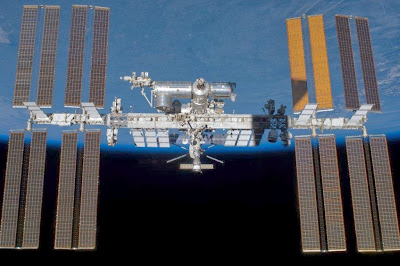The Obama administration has given NASA the go-ahead to operate the International Space Station (ISS) until at least 2024 but many of its scientific achievements to date remain largely unsung to the population at large.
The US decision means partner agencies, US government establishments and private-sector researchers from around the world can now count on at least another decade of orbital operations.
Bill Gerstenmaier, chief of space operations at NASA Headquarters, said the expanded lifetime will encourage increased commercial use of the lab complex, solidify the commercial launch market and provide critical insights into technology development and human physiology needed for eventual flights to deep space targets like Mars.
But what of the scientific value of such a challenging, and ultimately costly, enterprise like the International Space Station?
In September at the 64th International Astronautical Congress (IAC) in Beijing, China, delegates were treated to an inspiring presentation by NASA’s Dr Julie Robinson, International Space Station Program Scientist at the Johnson Space Center (JSC).
Dr Robinson, who coordinates the International Space Station (ISS) science programme and is author of ‘ISS Benefits for Humanity’ (published by NASA in 2012) spoke on the ‘Top 10 Research Results from Space Station’.
She provided historical context to her personal choice by stating the fundamental reason humans explore is not being motivated by the advancement of science.
“Early explorers travelled the world to exploit economic opportunities not to inspire their children about it,” she said. “Explorers are responsible for pushing the boundaries and the scientists follow behind.”
Dr Robinson described the ISS as “the most complex machine ever built by humans” and told delegates that it was easy to be “uniformed” about some of the great results coming from the Space Station.
“The Space Station is unique in that it supports almost every scientific discipline in some way,” she explained.
“Ultimately it will be judged on its engineering achievements, international achievements and science achievements. We are now in the research stage and this is very important to our stakeholders - 69 countries have participated in ISS utilisation so far.”
In selecting a personal ‘top 10', Dr Robinson took into account a variety of criteria - scientific journal quality, comments and reviews by other scientists, cases where novel information was presented, and benefits to humankind - all of which she described as important considerations in terms of research legacy.
Number 10 - preventing loss of bone mass in space through diet and exercise; if astronauts do the right set of exercises, have the correct amount of vitamin D and calories in their diet then they come home okay. Resistive exercise now helps treat osteoporosis cases on Earth.
Number 9 - understanding the mechanism of osteoporosis and developing new drugs to treat it. The first new drugs for treating muscle waste are now on the market as a result of research in microgravity.
Number 8 - Hyper-spectral imaging for water quality in coastal bays. A ‘gold standard’, according to Dr Robinson, which also allows scientists to distinguish between sediment pollution on satellite imagery.
Number 7 - Colloid self-assembly using electron fields for nano particles, a process which is impacting manufacturing processes on Earth.
Number 6 - New process of cool flame combustion - an unexpected and novel result. In microgravity, flames burn differently forming flaming spheres that turn out to be mini-labs for combustion research. Unlike flames on Earth, which expand greedily when they need more fuel, flame balls let the oxygen come to them.
Number 5 - A pathway for bacterial pathogens to become virulent; bacteria can become more virulent in space. Studying this helps develop new treatments and is an example of where biological science can make a significant advance by going into a different environment.
Number 4 - educational outreach, with 43 million students from all over the globe.
Number 3 - Dark matter is still out there according to the first data gathered from the ISS Alpha Magnetic Spectrometer (AMS) the most sophisticated detector of gamma cosmic rays that has ever been built.
Number 2 - Robotic assistance for brain surgery - the technology that went into developing neuroArm, the world’s first robot capable of performing surgery inside magnetic resonance machines, was born of the Canadarm.
Number 1 - A new targeted method of chemotherapy drug delivery with medical trials now underway as a result of ISS medical developments. It involves a single step process forming tiny liquid-filled, biodegradable micro-balloons containing various drug solutions (a process called microgravity micro-encapsulation) that can provide better drug delivery for tumours.
Dr Robinson concluded: “The benefits I have selected serve as examples of the Space Station’s potential as a ground-breaking scientific research facility.
“The ISS advances the state of scientific knowledge of our planet, looking after our health, and providing a space platform that inspires and educates the science and technology leaders of tomorrow.
“These benefits will drive the legacy of the ISS as its research strengthens economies and enhances the quality of life here on Earth for all people.”
The above article is based on one of a series of daily reports from the International Astronautical Congress 2013 held in Beijing, China, written by Clive Simpson for the Paris-based International Astronautical Association (IAF) and first appearing on the IAF website




